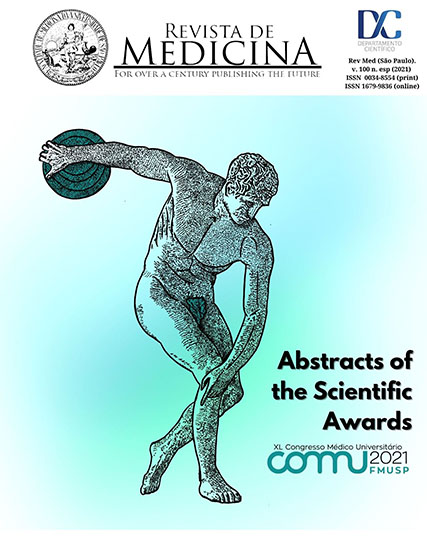Duodenopancreatectomy: influence of patient's intrinsic factors on results of pancreatic cancer surgical treatment
DOI:
https://doi.org/10.11606/issn.1679-9836.v100iespp2-2Palavras-chave:
Pancreatic neoplasms, Pancreaticoduodenectomy, Survival analysisResumo
Introduction: Pancreatic cancer is the fourth leading cause of cancer death in Western countries, with a more prevalent incidence in the elderly (1). It presents itself as a neoplasm with high lethality and low survival, surgical resection being the only treatment with curative potential. However, pancreatoduodenectomy (Kausch-Whipple technique) is one of the most difficult surgeries in the gastrointestinal system, due to the great difficulty in accessing the pancreas and its proximity to various delicate and vital structures, requiring advanced knowledge by the surgeon (6). Objective: Evaluate the profile of patients with pancreatic cancer and factors that contribute to the surgical outcome and survival after curative pancreatoduodenectomy. Method: A descriptive retrospective cross-sectional study was carried out through the analysis of records of pancreatoduodenectomy in the period May 2005 – July 2015 at Hospital Erasto Gaertner (HEG) in Curitiba/PR. Variables were analyzed using Student's t-test, non-parametric Mann-Whitney U test, and chi-squared test with Fisher's correction. Survival and disease-free survival rates were evaluated using the Kaplan-Maier method with the log-rank test and survival predictors identified with Cox regression. The SPSS 23.0 and STATA 15 programs were used, with p value being lower than 0.05 considered statistically significant. Results: 98 pancreatoduodenectomy were evaluated and 46 were in male patients and 30 were in patients aged <60 years. Ca 19-9 levels were elevated in 29% of patients before surgery and elevated in 5% after surgery. Regarding the location of the tumor, 77% were pancreatic, 14% were duodenal papilla and 8% were biliary tract. Regarding tumor histology, 81 were adenocarcinoma, 6 were cholangiocarcinoma and 5 were other diagnoses; 29% were well differentiated, 53% moderately and 17% poorly differentiated. About staging, 21% T1, 23% T2, 36% T3 and 18% T4 were found. Factors such as local tumor extension, location of the lesion and surgery time do not show a significant influence on the surgical outcome of these patients. The main postoperative complications were fistula and evisceration. The mean overall survival after surgery at 5 years was 12.24% and this was seen to be significantly higher in the <60 years group (p < 0.01). Discussion and Conclusion: It was seen that pancreatic tumors present in more advanced stages at diagnosis and are more prevalent in the elderly. These characteristics negatively impact 5-year overall survival rates, as this is higher in patients older than 60 years. Early diagnosis remains a challenge for successful treatment with curative potential, and remains a key point for the survival of these patients, as it allows for better staging and better surgical results.
Downloads
Downloads
Publicado
Edição
Seção
Licença
Copyright (c) 2021 Álisson Carvalho de Freitas, Heloisa Porath, João Lucas Aleixes Sampaio Rocha, Regina Maria Goolkate, Raphaella Paula Ferreira, Phillipe Geraldo Teixeira de Abreu Reis

Este trabalho está licenciado sob uma licença Creative Commons Attribution-ShareAlike 4.0 International License.




